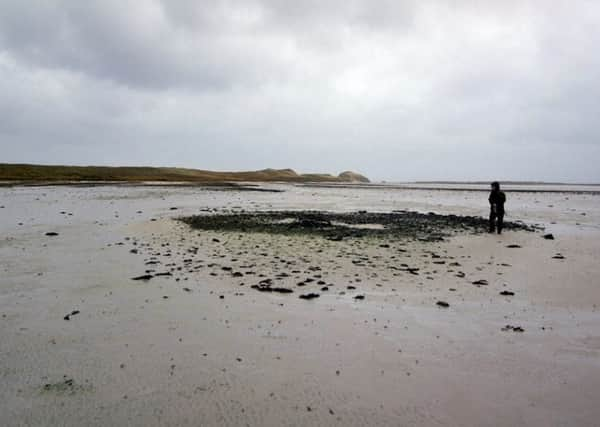Archaeologists find Bronze Age settlement on Orkney


A team led by the Archaeology Institute at the University of the Highlands and Islands found what is believed to be 14 separate example of Bronze Age houses at Tresness, Sanday this week, amid appalling weather conditions.
It is thought that the find represents one of the biggest settlements of its kind in Scotland.
Advertisement
Hide AdAdvertisement
Hide AdProfessor Jane Downes of UHI, who specialises in the Bronze Age, said she was astonished by the extent of the settlement area, which could have been home to Orkney dwellers between 3,000 and 4,000 years ago.
She said: “This must be one of the biggest complexes of Bronze Age settlement in the Scottish isles, rivalling the spreads of hut circles in other parts of mainland Scotland.”
Prof Downes arrived at Tressnes with a team of archaeologists from across the UK to examine an eroding stalled cairn on the point. Working alongside Dr Vicki Cummings from the University of Central Lancashire, they identified a circular spread of stones lying nearby on the western side of the ness. As the team examined the spread of remnants, a large number of stone mattocks – similar to pickaxes – were discovered with stone bars, hammerstones and stone flaked knives.
A spokesman for the Archaeology Institute at UHI said: “Closer examination revealed sections of stone walls and uprights, which were clearly part of a house structure.
“No sooner was the spread of stones identified as the remains of a Bronze Age house, when another spread of stones was seen lying just a few metres away. This too was another house structure covered with a mass of stone tools.
“As the group continued walking along the sand, one after another a series of Bronze Age sites were discovered.”
The houses became visible as shapes made out of stones, all in different formations, with some 14 examples scattered over a one kilometre stretch of sand.
The settlement appears to have been sealed beneath the massive sand dunes that characterise the approach to Tresness but which are eroding beneath the dune complex.
Advertisement
Hide AdAdvertisement
Hide AdThe UHI spokesman added: “It was the scale and density of occupation that really surprised the archaeologists as they proceeded along the ness. Not only are house structures present but working areas are also visible.”
There have been several recent finds which point to Bronze Age life on Orkney. They include a very rare building discovered in September on Westray, which experts believe could have been used as a sauna or steam house, possibly for ritualistic purposes.
The sauna was found close to where the “Westray Wife” was found in 2009 – a small Neolithic figurine, it is the first carving of a human form to be found in Scotland and the earliest depiction of a face found in the UK.
The UHI spokesman said: “Similar Bronze Age houses have recently been excavated at the Links of Noltland, Westray but the scale of the Sanday discovery is unparalleled in Orkney.”